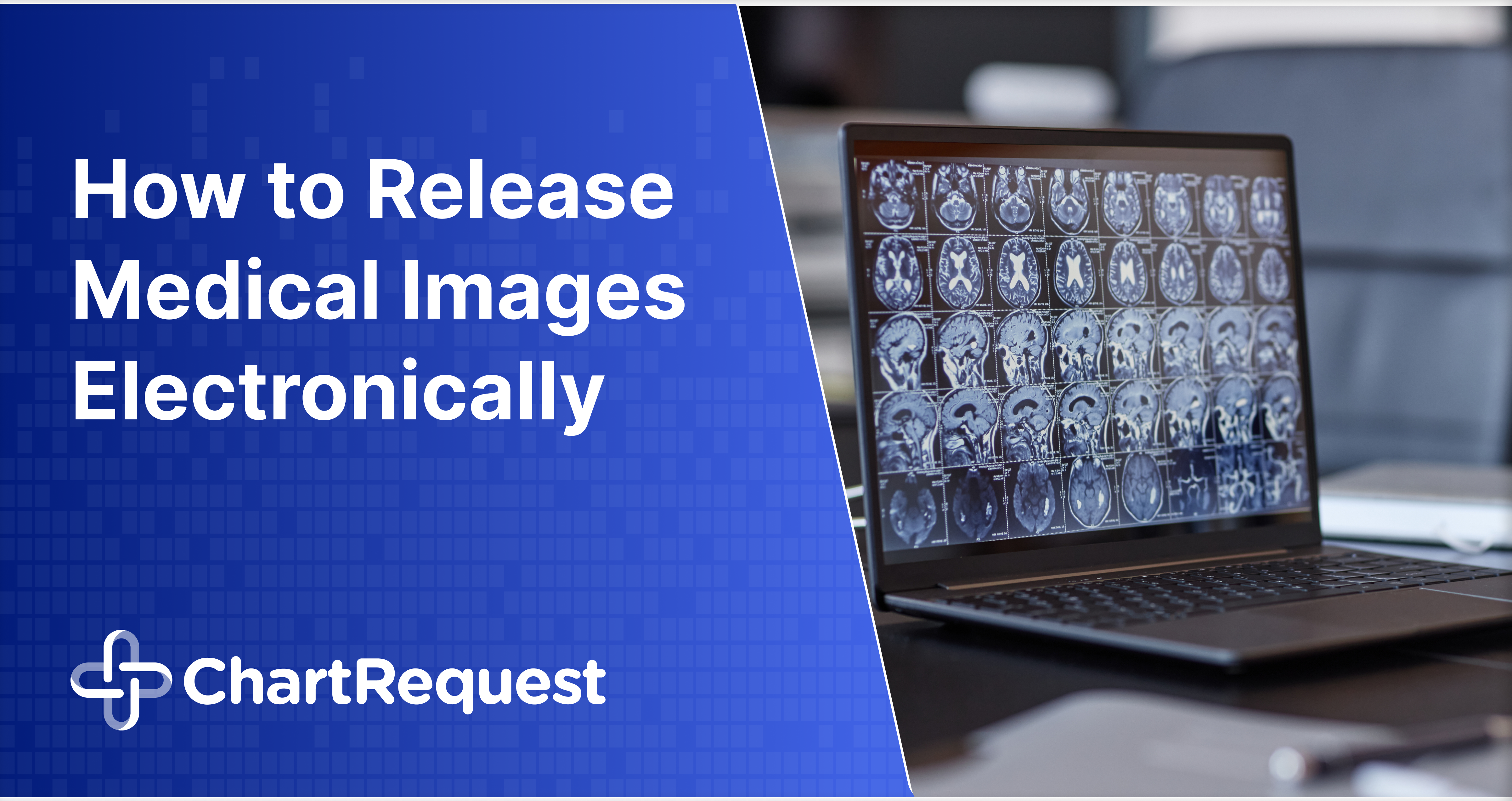Releasing healthcare images on time helps speed up the visual detection of diseases and injuries to streamline early diagnoses and life-saving treatment. Still, record exchange is easier said than done for many small and medium-sized practices.
Unlike standard medical charts, x-ray and MRI exchange has several potential bottlenecks. In this article, we’ll address these challenges and highlight how modern tools can simplify this process.
Explore our self-guided demo to see our built-in DICOM viewer in action.
Why Are Healthcare Images Challenging To Release
Releasing healthcare images requires a high degree of responsibility. Whether they’re needed to update a patient’s medical history, for cutting-edge research, or for litigation, every release follows a process.
On the surface, releasing an image might seem straightforward. However, complex security regulations to protect sensitive data can slow the process.
Obstacles your organization might face include:
- Privacy Concerns: Patient privacy is the biggest hurdle to overcome when releasing medical images. Your team must follow stringent and ever-evolving HIPAA guidelines to maintain confidentiality. A single slip-up can cause significant losses for your patients and hurt your organization’s reputation.
- Tech Challenges: Technology compatibility can be a challenge with countless imaging systems peppered across healthcare facilities. Adopting new technologies on a tight budget can create delays and financial setbacks.
- Interpretation Errors: A medical image without context is like a book with important pages torn out. Missing or inaccurate details can cause patients to worry about their health conditions or data.
- Data Silos: Fractured record systems can create accessibility issues for your team. Maximizing interoperability helps solve this problem.
Releasing healthcare images can feel daunting at first, but it is crucial to strike a balance between patient care and efficiency.
Common Types of Healthcare Images for Release
Healthcare images revolutionize modern medicine through early detection and diagnosis. The ten most common types of medical images include:
- X-Rays: Examine bones and identify fractures or infections.
- Computed Tomography Scans (CT / CAT): Generate detailed, cross-sectional images of soft tissue and organs.
- Magnetic Resonance Imaging (MRI): Effective for brain, spinal cord, and joint examinations.
- Ultrasound: Examines the uterus, heart, and other vital organs.
- Positron Emission Tomography (PET) Scans: Provide crucial metabolic data.
- Fluoroscopy: Assists in guiding the placement of medical devices inside the body.
- Nuclear Medicine: Produces images through targeted radiation that provides insights into the function of organs or tissues.
- Digital Subtraction Angiography (DSA): Provides insight into blood vessels and blockages.
- Mammography: Assists in the early detection of breast cancer.
- Bone Densitometry (DEXA): Assesses bone density and fracture risks.
Securing Your Healthcare Data With ChartRequest
Releasing healthcare images has been a long-standing issue for doctors. While physical image transfers used to be the norm, digitized solutions encourage positive change.
Release of information software can provide several benefits to your practice, including:
- Centralized image requests and reporting through the user dashboard.
- Top-notch encryptions for data confidentiality.
- Seamless integrations with other EHR systems in your organization.
ChartRequest is the number-one release of information software for healthcare providers. The platform makes medical image releases fast and easy while maintaining 100% compliance.
Here are many of the benefits your organization can enjoy when you partner with us:
- Speed: Medical decisions hinge on timely data access. ChartRequest removes the waiting game. We’ve designed our release of information software to maximize speed without compromising accuracy.
- Accessibility: ChartRequest enables users to fetch necessary data in record time. This perk highlights our commitment to elevating the patient experience.
- Dedicated Servers: We ensure our technology is always available to requestors.
- HIPAA Compliance: Data security is a mandate we take seriously. ChartRequest understands this principle and optimizes it at the core of our operations.
- Strict Protocols: Adhering to the stringent standards set by HIPAA, ChartRequest’s processes keep data confidential and secure.
- End-to-end encryption: Data transmitted across ChartRequest’s platform have encryptions at rest and in transit.
- User-Friendly Interface: ChartRequest is all about simplicity on the surface, even when backed by sophisticated technology.
- Training and Support: Our white-glove service has helped us achieve an average of 4.9 stars on Google with over 1,000 reviews.
ChartRequest is the gold standard in health information exchange — helping institutions deliver excellent patient care without breaking their budget. Whether you manage X-rays or MRIs, we can support your release of medical images year-round.
Partner with ChartRequest to simplify your medical image exchange.


